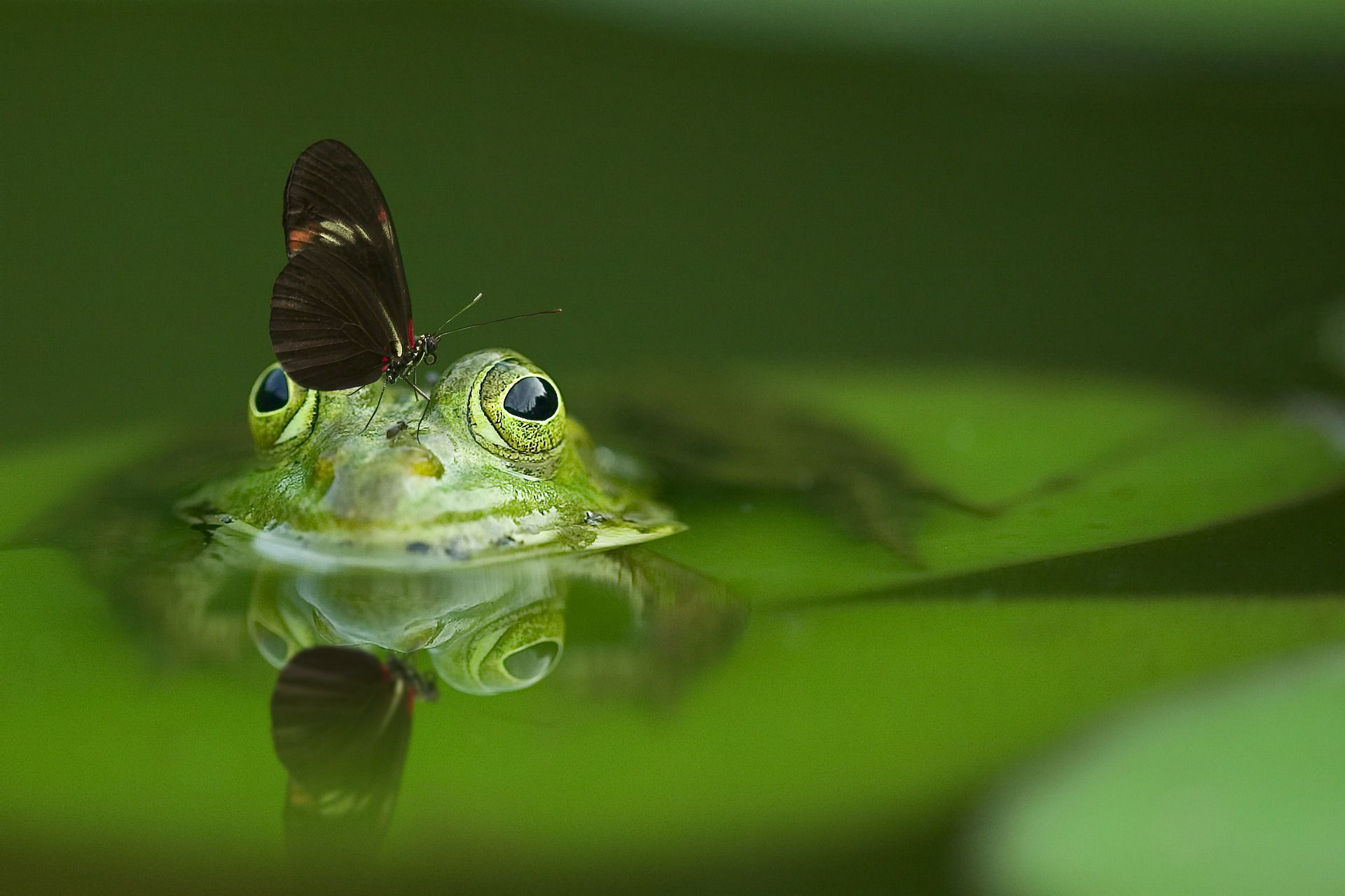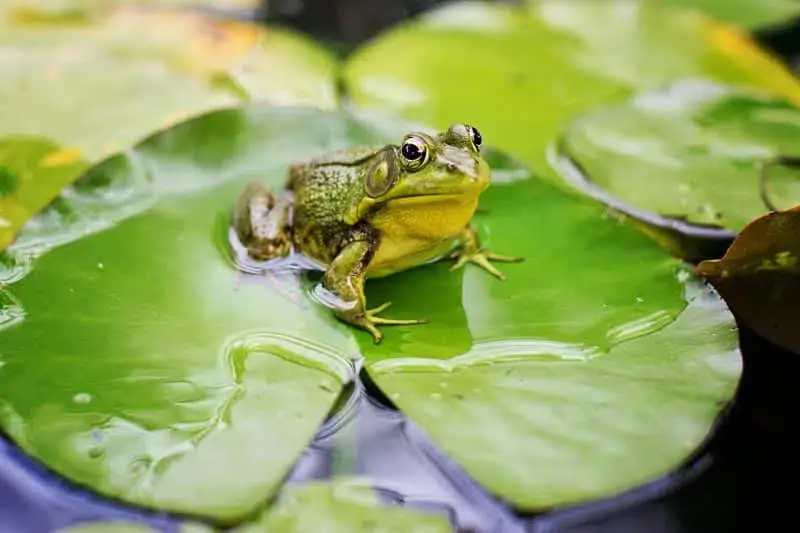Frogs are fascinating creatures with unique dietary needs. Understanding what frogs eat is crucial for their well-being and survival.
In this comprehensive guide, we will delve into the world of frogs’ diets, exploring the basics, different types of frogs and their diets, nutritional requirements, feeding habits, and the impact of diet on their health and longevity.
Understanding the Frog’s Diet

Frogs, those enigmatic amphibians that inhabit a multitude of ecosystems, have diets as diverse as their habitats. From what do frogs eat to the intricate factors influencing their dietary choices, let’s delve into the intriguing world of a frog’s sustenance.
The Basics of a Frog’s Diet
Frogs eat with a gusto that reflects their role as skilled predators. The dietary preferences of these remarkable creatures undergo significant transformations throughout their lifecycle. Here’s a glimpse into the frog’s culinary journey:
Baby frogs, or tadpoles, commence their lives with a predominantly herbivorous diet. They eat algae and other microorganisms found in their aquatic homes. As they undergo metamorphosis into adult frogs, their dietary habits shift dramatically. Adult frogs, across most species, turn into enthusiastic insectivores, relying heavily on live prey for sustenance.
Pet frogs, just like their wild counterparts, often find delight in the hunt for insects. Fruit flies, tiny morsels that flit through the air, are a common choice. Pet owners meticulously curate diets to ensure their beloved pet frogs receive balanced and nutritious meals, mirroring the offerings of their natural habitats.
Factors Influencing a Frog’s Diet

Several intriguing factors play a role in shaping what frogs eat:
1. Natural Habitats: Frogs are intimately tied to their surroundings. Different species inhabit various ecosystems, and their diets are intricately woven into the food web of their natural habitat.
2. Frog Species: The breadth of frog species is immense, and with it comes a wide array of dietary preferences. Smaller frog species may primarily eat animals smaller than those consumed by their larger counterparts.
3. Feeding Mechanisms: Frogs are agile and patient hunters. Armed with a sticky tongue and unparalleled precision, they hunt with unmatched accuracy. Their weapon of choice is often their incredible sticky saliva, a tool that helps them catch prey in the blink of an eye.
4. Gut Loading: To ensure optimal nutrition for pet frogs, insects are often gut-loaded with vitamin-rich foods before becoming a part of the frog’s menu. This practice enhances the nutritional value of the prey.
5. Variety is Key: A diverse diet is the cornerstone of frog health. While insects are a staple, frogs may occasionally indulge in small mammals, pond plants, and even small birds. This diversity ensures they receive a wide range of nutrients.
6. Pet Store Options: The accessibility of live prey from pet stores is a boon for pet frogs and their human caretakers. It provides a convenient and reliable food source that mirrors their natural environment.
Different Types of Frogs and Their Diets

Frogs, those fascinating amphibians found in a multitude of ecosystems around the world, exhibit an astonishing diversity not only in their appearance but also in their dietary preferences. From carnivorous frogs with a penchant for live prey to omnivorous frogs that dabble in a bit of everything, let’s explore the remarkable world of frogs and their diets.
Carnivorous Frogs: Masters of the Hunt
Carnivorous frogs are the apex predators of the amphibian world. These adult frogs, whether in the wild or in captivity as pet frogs, have a voracious appetite for meat. Their diet is a carnivore’s dream, primarily consisting of live prey.
In the wild, these formidable hunters, such as the notorious common frog, rely on their incredible speed and precision to catch prey. With their sticky tongues and lightning-fast reflexes, they snatch unsuspecting insects like fruit flies, wild-caught insects, and even small birds right out of the air.
In captivity, owners of pet frogs often provide a steady diet of gut-loaded insects—insects that are fed high-quality diets to ensure optimal nutrition for the frogs. This practice guarantees that the pet frog receives a well-balanced and nutritious meal.
Omnivorous Frogs: Nature’s Scavengers
In the world of frogs, omnivorous frogs are the versatile ones. They don’t discriminate; they eat a bit of everything. From small mammals to pond plants, their diet encompasses a wide range of items.
During their early stages, as tadpoles, they might be primarily herbivorous, feeding on algae and plant matter in their natural habitat. However, as they metamorphose into adult frogs, their diet evolves into a more diverse mix of food sources.
These adaptable creatures, often found in aquatic species, may consume brine shrimp, frog eggs, and even fruit and vegetables. Their willingness to embrace various dietary items reflects their ability to thrive in different environments.
Feeding Your Frog

When it comes to feeding your frog, meticulous research is essential. Understanding the dietary needs of your specific frog species ensures you provide a diet that aligns with their preferences and nutritional requirements.
While some frog enthusiasts may experiment with human food, caution is crucial to maintain a balanced diet for your frog. The objective is not only to determine what frogs eat but also to provide a safe and nutritious menu that caters to their unique dietary needs.
Frogs may be small in size, but their diets are nothing short of extraordinary. From agile hunters that catch prey with precision to adaptable foragers in their natural environment, these amphibians exemplify a remarkable range of dietary habits.
Whether you’re observing these creatures as wild frogs in their natural habitats or caring for them as pet frogs in the controlled confines of a terrarium, their diets are a testament to their adaptability and resourcefulness.
As you embark on the journey of frog ownership, remember the importance of understanding what do frogs eat specific to your frog’s species. The world of frogs and their diets is a captivating one, offering insights into the intricate relationships between these amphibians and their environments.
So, the next time you encounter a frog in the wild or gaze at your pet frog in its enclosure, take a moment to appreciate the diversity of foods that fuel their fascinating lives. From the speedy carnivorous frogs to the versatile omnivorous frogs, these creatures exemplify the wonders of nature’s diversity, one meal at a time.
Feeding Habits of Frogs

Understanding the feeding habits of frogs can shed light on their hunting techniques, feeding frequency, and timing.
Frogs, fascinating creatures of the amphibian world, have evolved a variety of feeding habits that allow them to survive and thrive in their diverse habitats. Let’s delve deeper into the intriguing world of frog feeding habits and explore the remarkable strategies they employ to secure their meals.
Hunting Techniques of Frogs
Frogs employ various hunting techniques to catch their prey. Some species rely on their camouflage, blending into their surroundings until an unsuspecting insect comes close enough to be snatched by their quick tongue. These masters of disguise patiently wait for the perfect moment to strike, their bodies perfectly blending with the foliage or the muddy ground.
Other frogs, however, take a more active approach to hunting. With lightning-fast reflexes and powerful hind legs, they leap towards their prey, seizing the opportunity with precision and agility.
These acrobatic hunters are a marvel to behold as they gracefully launch themselves through the air, their eyes locked on their target.
But it’s not just their physical abilities that aid in their hunting. Frogs also use their sharp eyesight to detect movement, responding swiftly to any potential prey. With eyes positioned on the sides of their heads, they have a wide field of vision, allowing them to spot even the slightest twitch or flutter.
They often have excellent depth perception as well, allowing them to accurately judge distances and successfully capture their targeted prey.
Frequency and Timing of Frog Feeding
The frequency and timing of frog feeding depend on factors such as availability of food and environmental conditions. Most frogs are opportunistic feeders, meaning they eat whenever there is an opportunity to do so.
During warmer months or rainy seasons, when insect activity is high, frogs tend to feed more frequently. The abundance of buzzing insects provides them with a constant source of nourishment, and they take full advantage of it. They may consume several small meals throughout the day to fuel their energy requirements.
However, during colder months or dry spells, when food sources become scarce, frogs may enter a period of reduced feeding. They conserve energy and rely on their stored fat reserves to sustain them until conditions improve.
Interestingly, some frog species have adapted to specific feeding habits based on their environment. For example, tree frogs have evolved specialized toe pads that allow them to climb vertical surfaces, enabling them to reach insects that dwell in the treetops.
These resourceful amphibians have found their niche in the ecosystem and have developed unique hunting techniques to thrive in their arboreal habitats.
The feeding habits of frogs are as diverse and fascinating as the species themselves. From their stealthy camouflage to their lightning-fast strikes, frogs have evolved an impressive array of hunting techniques. Their feeding frequency and timing are influenced by environmental factors, ensuring their survival in ever-changing conditions.
So, the next time you come across a frog, take a moment to appreciate the incredible adaptations that allow them to secure their meals and thrive in their watery homes.
Impact of Diet on Frog’s Health and Longevity

The diet of a frog plays a vital role in its overall health and longevity. A balanced and nutritious diet ensures proper growth, keeps the immune system strong, and reduces the risk of diseases. However, an inadequate or imbalanced diet can lead to various health issues.
Common Health Issues Related to Diet
Frogs with a diet lacking sufficient protein may experience stunted growth, weakened muscles, and decreased reproductive capabilities. Inadequate intake of essential nutrients like vitamins and minerals can impact the frog’s immune system, rendering it more susceptible to infections and diseases.
On the other hand, an excessive intake of certain prey, such as toxic insects or inedible plants, can result in poisoning or digestive issues. It is crucial for frogs to consume a diverse range of prey to ensure they receive all the necessary nutrients without ingesting harmful substances.
The Role of Diet in Frog’s Lifespan
A well-balanced diet throughout a frog’s life can contribute to its longevity. Inadequate nutrition, especially during critical developmental stages, can hinder growth and reproductive capabilities, ultimately shortening the frog’s lifespan.
Good nutrition also impacts a frog’s ability to withstand environmental stressors and survive challenging conditions. By providing frogs with a suitable diet, we can help sustain their populations and contribute to the delicate ecological balance in which they exist.
Conclusion
In conclusion, understanding what frogs eat is crucial for their survival and well-being. Frogs possess diverse diets, with some being strictly carnivorous and others exhibiting omnivorous tendencies. They have specific nutritional requirements, with proteins and insects playing pivotal roles in their diets.
Frogs showcase impressive feeding habits, employing various techniques to capture their prey. The frequency and timing of their feeding depend on factors such as food availability and environmental conditions.
The diet of frogs significantly impacts their health and longevity. A balanced and nutritious diet ensures proper growth, immunity, and reproductive capabilities. Conversely, an inadequate or imbalanced diet can lead to various health issues and decrease their lifespan.
By understanding and respecting the dietary needs of frogs, we can contribute to their conservation and environmental balance, ultimately preserving these fascinating creatures for future generations to appreciate and admire.

